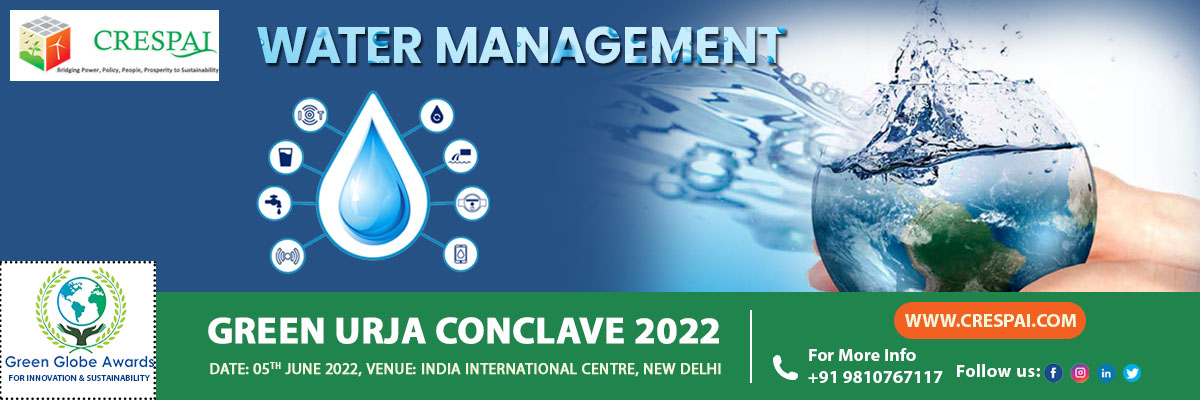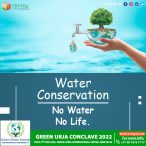
Water is the lifeline for the existence of living beings on earth. The fresh or drinking water resource is very limited and the skewed geographical distribution makes it one of the primary life support for many water-scarce countries. India surely is one of those countries where freshwater availability is not as per the requirement of its vast population. Further, the economic growth and aspirations make water as one of the important natural resources which need to be managed well to have a sustainable future. Considering the fact that, the freshwater availability is limited, the only feasible option is to reduce the consumption, recycling and reusing the water.
Sadly, nowadays many parts of the world is facing major water crisis. The reasons are;
❖ Water availability is limited. Excessive domestic and industrial use has caused a scarcity of water.
❖ Gigantic population growth and urbanization play a main role in this crisis.
❖ Natural Replenishment of water sources are not enough to fulfill the needs
❖ The industrialization has polluted and contaminated potable water resources such as rivers, lakes, etc.
❖ Severe droughts and extreme climate conditions have also contributed to this scarcity.
Water Management: It would be the mechanism of evolving various methods of managing the freshwater sources and managing the usage in such a way that the water availability is sustained for generations. Water management includes planning, developing, distributing and managing the optimal use of water resources. Various methods used for water management is given as under;
Supply Side Management:
Rainwater harvesting: Collection and storage of rainwater which is supposed to runoff is called Rainwater harvesting (RWH). Rainwater is collected from a collecting surface such as roof or open ground and then directed to a tank, cistern, deep pit (well, shaft, or borehole), aquifer, or a reservoir with percolation. The water then can be used for different purposes.
Groundwater recharge: Increasing the groundwater supplies artificially increases the amount of water that enters an aquifer through human-controlled means. This can be done using conveyances such as infiltration basins, trenches, dams, or injection wells is called groundwater recharge. This will help in matching the rate of withdrawals to match the rate of replenishment of the aquifers.
Desalination: Desalination is the process of making the saline water drinkable through evaporation and condensation techniques. This refers to the removal of salts and minerals from saltwater such as seawater. This can be a potential technique to provide drinkable water in water-scarce coastal areas near.
Demand Side Management;
Drip irrigation: Drip irrigation is the method of slowly dripping the water to the roots of plants, either from above the soil surface or buried below the surface. It has the potential to save water and nutrients by allowing water directly to the root so as to minimize wastage and evaporation.
Reuse of Water; The theory of bringing already used water to mainstream works on the process of recycling or reclamation of water, its treatment through various water treatment technologies, and then making it useful for reuse in irrigation, agriculture, industries, groundwater restock, replenishing, and most importantly potable water supply. The following methods are used for reusing of water;
Greywater: Greywater is gently used water from your bathroom sinks, showers, tubs, and washing machines which can be used for gardening or irrigation purpose.
Sewage water treatment: It is the process of separating contaminants wastewater, containing mainly household sewage plus some industrial wastewater generated in municipal areas or industrial units. Various physical, chemical, and biological processes are deployed for removal of contaminants and separate usable treated wastewater which is safe enough for irrigation purposes.
Conclusion:
Depending on the application various water management methods must be adopted to preserve these precious life-supporting resources. An integrated approach must be adopted by Govt. and civil society to preserve our water sources and sensibly use the water in our household works as well as industrial applications.
Reuse water technology has emerged as an important tool globally. It has become the non-traditional source of potable water worldwide. Water recycling and reuse is a rapidly growing industry and top-most companies are in this sector. They offer economical and eco-friendly water purifiers. The water which is reused is domestic and industrial wastewater.
The water can be reused in agricultural activities like irrigation and plantation. Municipal corporations can use it as a potable water supply. This water can be reused in the maintenance of parks, grasses, and greenery. It can also be used for mills, factories, refineries, and power plants. Construction sites can use this water for mixing concrete and dust control. Municipalities can reuse water for surface cleaning of roads.
Role of CRESPAI in Sustainability & Water Resource management
CRESPAI is a non-profit organization registered as a society with the mission of bridging the gap between all stakeholders in renewable energy policy, production, distribution, and consumption in India.
We help organizations working on making better use of water for a brighter future.
